 Researchers have been able to resolve with unprecedented resolution the structural changes of individual molecules upon charging, including porphine, the parent compound of porphyrins. This new understanding unlocks some of the mysteries of molecular charge-function relationships as it relates to how biology converts and transports energy.
Researchers have been able to resolve with unprecedented resolution the structural changes of individual molecules upon charging, including porphine, the parent compound of porphyrins. This new understanding unlocks some of the mysteries of molecular charge-function relationships as it relates to how biology converts and transports energy.
Jul 12th, 2019
Read more
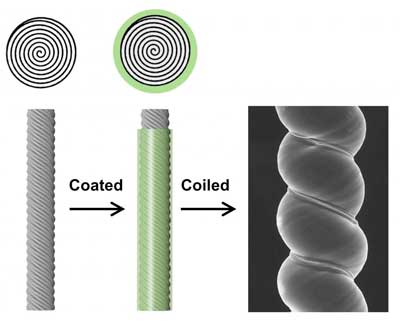 To form the new muscles, the research team applied a polymer coating to twisted CNT yarns, as well as to inexpensive nylon, silk and bamboo yarns, creating a sheath around the yarn core.
To form the new muscles, the research team applied a polymer coating to twisted CNT yarns, as well as to inexpensive nylon, silk and bamboo yarns, creating a sheath around the yarn core.
Jul 11th, 2019
Read more
 New system of contracting fibers could be a boon for biomedical devices and robotics.
New system of contracting fibers could be a boon for biomedical devices and robotics.
Jul 11th, 2019
Read more
 X-ray imaging shows that nanostructured silica acts as a protective vehicle to deliver intact antigen to the intestine so that it can trigger an immune response. The material can give rise to a polyvaccine against six diseases.
X-ray imaging shows that nanostructured silica acts as a protective vehicle to deliver intact antigen to the intestine so that it can trigger an immune response. The material can give rise to a polyvaccine against six diseases.
Jul 11th, 2019
Read more
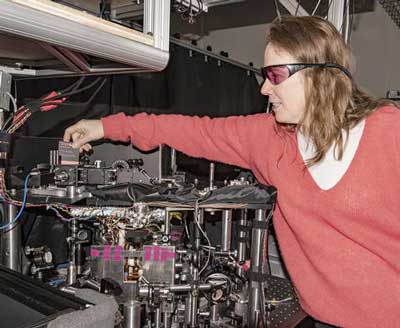 Researchers have upgraded their compact atomic gyroscope to enable multitasking measurement capabilities and measure its performance, important steps toward practical applications.
Researchers have upgraded their compact atomic gyroscope to enable multitasking measurement capabilities and measure its performance, important steps toward practical applications.
Jul 11th, 2019
Read more
 Engineers develop new superclear, supertransparent, stain-resistant, anti-fogging nanostructured glass based on butterfly wing.
Engineers develop new superclear, supertransparent, stain-resistant, anti-fogging nanostructured glass based on butterfly wing.
Jul 11th, 2019
Read more
 An injection of nanoparticles can prevent the body's immune system from overreacting to trauma, potentially preventing some spinal cord injuries from resulting in paralysis.
An injection of nanoparticles can prevent the body's immune system from overreacting to trauma, potentially preventing some spinal cord injuries from resulting in paralysis.
Jul 11th, 2019
Read more
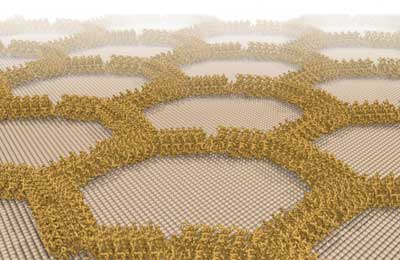 Findings lay foundation for engineered nano-scale circuits, sensors and filters.
Findings lay foundation for engineered nano-scale circuits, sensors and filters.
Jul 11th, 2019
Read more
 Single molecules measure electrical potentials.
Single molecules measure electrical potentials.
Jul 11th, 2019
Read more
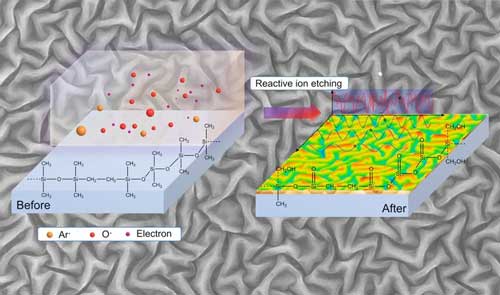 The physicists introduce a facile, scalable and especially lithography-free method for the generation of controllable nanostructures with directional randomness and dimensional order, significantly boosting the efficiency of white OLEDs.
The physicists introduce a facile, scalable and especially lithography-free method for the generation of controllable nanostructures with directional randomness and dimensional order, significantly boosting the efficiency of white OLEDs.
Jul 11th, 2019
Read more
 Scientists have developed a method to produce graphene materials using a novel technique: mixing oxidized graphite with bacteria.
Scientists have developed a method to produce graphene materials using a novel technique: mixing oxidized graphite with bacteria.
Jul 11th, 2019
Read more
 Scientists have developed a method for self-assembly of hexagonal organic porous structures on molybdenum diselenide film to create ordered nanostructures.
Scientists have developed a method for self-assembly of hexagonal organic porous structures on molybdenum diselenide film to create ordered nanostructures.
Jul 11th, 2019
Read more
 Scientists discovered a DNA-like twisted crystal structure created with a germanium sulfide nanowire, also known as a van der Waals material.
Scientists discovered a DNA-like twisted crystal structure created with a germanium sulfide nanowire, also known as a van der Waals material.
Jul 10th, 2019
Read more
 Researchers have discovered a way to produce more electricity from heat than thought possible by creating a silicon chip that converts more thermal radiation into electricity.
Researchers have discovered a way to produce more electricity from heat than thought possible by creating a silicon chip that converts more thermal radiation into electricity.
Jul 10th, 2019
Read more
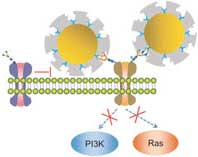 A particularly aggressive, metastasizing form of cancer, HER2-positive breast cancer, may be treated with nanoparticles 'imprinted' with specific binding sites for the receptor molecule HER2.
A particularly aggressive, metastasizing form of cancer, HER2-positive breast cancer, may be treated with nanoparticles 'imprinted' with specific binding sites for the receptor molecule HER2.
Jul 10th, 2019
Read more
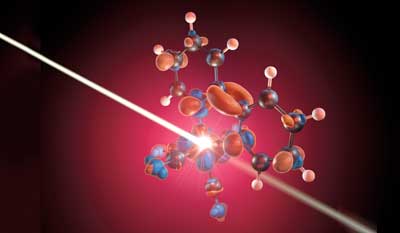 For the first time, a team there has investigated the fundamental photochemical processes around the metal atom and its ligands.
For the first time, a team there has investigated the fundamental photochemical processes around the metal atom and its ligands.
Jul 10th, 2019
Read more
 Researchers have been able to resolve with unprecedented resolution the structural changes of individual molecules upon charging, including porphine, the parent compound of porphyrins. This new understanding unlocks some of the mysteries of molecular charge-function relationships as it relates to how biology converts and transports energy.
Researchers have been able to resolve with unprecedented resolution the structural changes of individual molecules upon charging, including porphine, the parent compound of porphyrins. This new understanding unlocks some of the mysteries of molecular charge-function relationships as it relates to how biology converts and transports energy.















 Subscribe to our Nanotechnology News feed
Subscribe to our Nanotechnology News feed